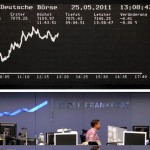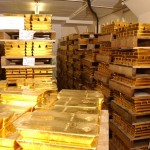The pound fell to the weakest level in a month versus the US dollar after Bank of England Governor Mark Carney commented yesterday that according to him, there was enough spare capacity in the UK economy, suggesting rates may be put on hold for a prolonged period of time.
GBP/USD hit a session low at 1.6568 at 10:50 GMT, after which consolidation followed at 1.6599, losing 0.11% for the day. Support was likely to be received at February 12th low, 1.6426, while resistance was to be encountered at March 11th high, 1.6654.
Mark Carney said yesterday before the UK Treasury Committee that the amount of spare capacity in the UK economy is probably slightly higher than 1.5% of GDP, suggesting the economic recovery may continue without necessarily raising interest rates and reiterated that if rate increases need to be done, they will be gradual. He also added that members of the central bank Monetary Policy Committee deviated widely in their opinions as to what is the amount of spare capacity in the economy. The Bank of England Governor said that market players’ expectations that the main interest rate may reach 2% or 2.5% over the next three years are plausible.
On Monday, the sterling fell by 0.6% against the US dollar, the most since January 13, after Bank of England Deputy Governor Charlie Bean said that further strengthening of the UK currency may be an obstacle to economic recovery.
Also fanning negative sentiment, the UK Office for National Statistics (ONS) reported yesterday that the nation’s manufacturing output rose 0.4% in January, exceeding analysts’ expectations of a 0.3% increase. December’s manufacturing production received an upward revision to a 0.4% increase from a previously estimated 0.3% gain. At the same time, industrial production, which also includes utilities and mines, advanced 0.1% in January, trailing analysts’ estimates of a 0.2% increase. Industrial output in December was upward revised to 0.5% gain, from a previously reported 0.4% increase. The slowdown in industrial production can be attributed to recent bad weather conditions in the UK, which hit oil and gas production.
In annualized terms, manufacturing output increased at a 3.3% rate in January, in line with analysts’ forecasts and up from a 1.4% rate in the previous month. The report also revealed that industrial production rose 2.9% in January from a year ago, short of analysts’ estimates of a 3% advance, but higher than the 1.9% increase in the previous month.
According to data by the ONS, nine out of thirteen sectors increased output, with 6.2% gain in production of rubber and plastic products, partly offset by a 13.9% decline in pharmaceuticals production, the largest monthly decline in more than four decades.
In its quarterly inflation report last month, Bank of England revised its forward guidance, replacing the 7% unemployment threshold with a range of economic indicators, including spare capacity and said it intended to maintain the stock of purchased assets at least until the first increase in its benchmark rate.
The central bank also raised its forecast for the UK economic growth in 2014 to 3.4% from 2.8% projected in November and predicted the first increase of interest rates will come in April 2015. Bank of England projected inflation of 1.9% in the next three years, below the central bank target of 2%.
BoE said the unemployment rate will probably fall below 7% in the first quarter of this year, but at the same time underscored there was “scope to absorb spare capacity further before raising bank rate” from the current record-low 0.5%. BoE estimated an output gap between 1% and 1.5% of UK gross domestic product.
The sterling has advanced 13% in the past year, being the best performer of 10-developed-nation currencies tracked by Bloomberg Correlation-Weighted Indexes, while the US dollar slipped 0.5%.
Meanwhile, greenback’s demand continued to be supported after two Fed officials commented on Monday that the hurdle rate to alter the pace of Fed stimulus cuts was too high.
At the same time, Fed officials will try to determine whether the weakness economy has recently demonstrated is due to temporary factors, before their next policy meeting scheduled for March 18-19th.
The central bank announced in December that it will pare monthly bond-buying purchases by $10 billion, after which it decided on another reduction of the same size at the meeting on policy in January, underscoring that labor market indicators, which “were mixed but on balance showed further improvement”, while nation’s economic growth has “picked up in recent quarters.”
Elsewhere, EUR/USD hit a session high at 1.3875 at 10:32 GMT, after which the pair trimmed daily gains to trade little changed at 1.3860 by 10:58 GMT. Support was likely to be received at March 11th low, 1.3834, while resistance was to be met at March 11th high, 1.3877.





